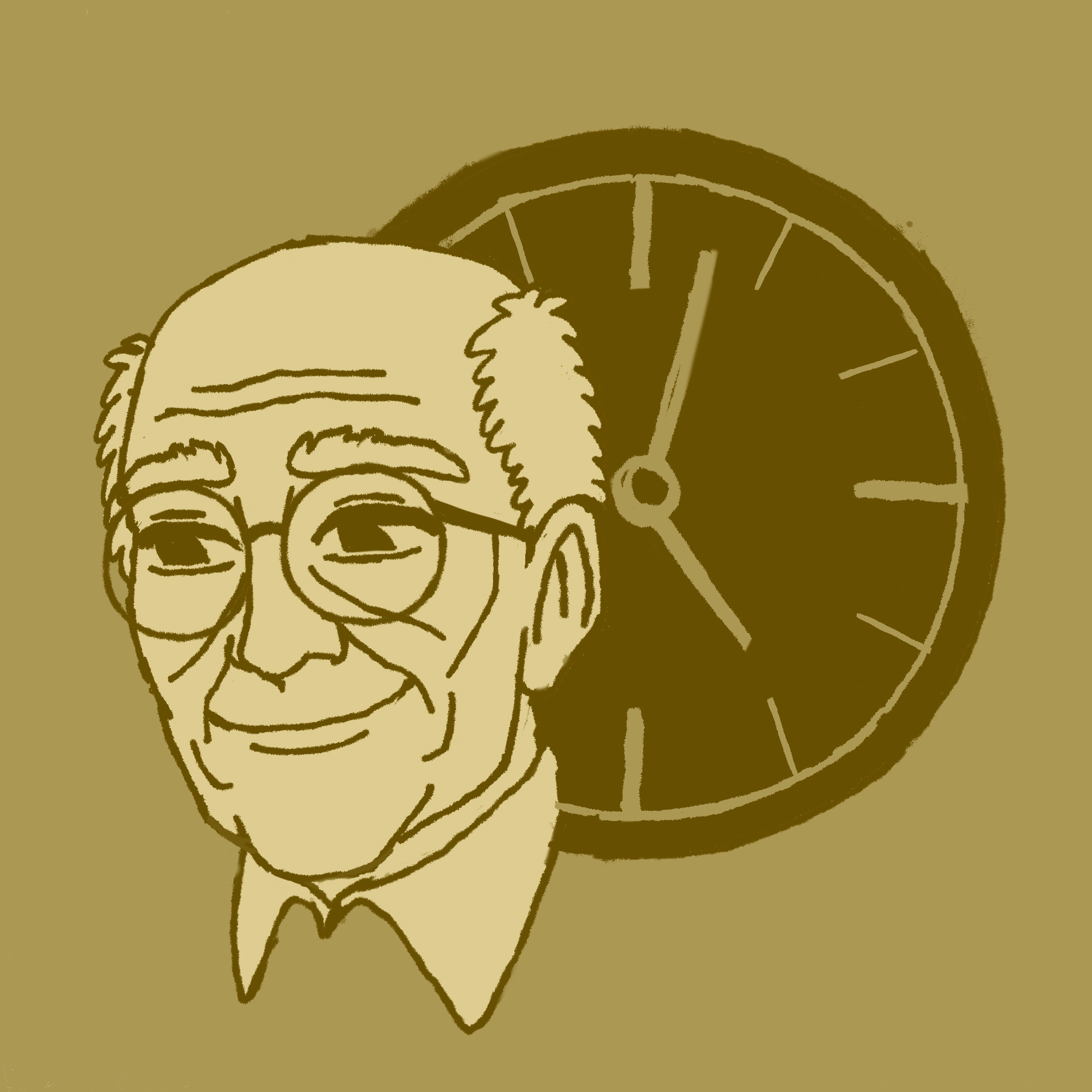Please visit response.fsu.edu for official FSU updates and resources.
How to Live According to the Curious Case of Benjamin Button
 Netflix added a forgotten gem to its collection this past May. Audiences vaguely remember The Curious Case of Benjamin Button as the movie where Brad Pitt is born old and dies young. I remember the buzz that this movie generated when it first came out in 2008. Television networks aired it so often that I was able to watch it a few times, though I never quite understood why adults grew so silent and contemplative at the end. I was old enough to understand that many of the characters had passed away, which could explain the silence. But other movies with similar death tolls did not have the same, sullen effect that Benjamin Button had on adults. Upon watching the movie for the first time in my 20s, I finally began to understand why the story leaves audiences in a melancholy, catatonic state, and it has nothing to do with death. On the contrary, it had everything to do with life.
Netflix added a forgotten gem to its collection this past May. Audiences vaguely remember The Curious Case of Benjamin Button as the movie where Brad Pitt is born old and dies young. I remember the buzz that this movie generated when it first came out in 2008. Television networks aired it so often that I was able to watch it a few times, though I never quite understood why adults grew so silent and contemplative at the end. I was old enough to understand that many of the characters had passed away, which could explain the silence. But other movies with similar death tolls did not have the same, sullen effect that Benjamin Button had on adults. Upon watching the movie for the first time in my 20s, I finally began to understand why the story leaves audiences in a melancholy, catatonic state, and it has nothing to do with death. On the contrary, it had everything to do with life.
Benjamin Button is loosely based upon a short story written by F. Scott Fitzgerald, who – in a letter to his editor, Harold Ober – sullenly acknowledged that he would be remembered for his flapper stories, like The Great Gatsby, and not his other works. In Tales of the Jazz Age, Fitzgerald mentions that the idea for Benjamin Button came from a remark made by Mark Twain about how unfortunate it is that the best part of life is the beginning and the worst part is the end. In the short story, Benjamin Button is born as an old man and dies as a baby in a crib. Throughout his life, he encounters many obstacles regarding the discrepancy between his age and his appearance. When he is eighteen years old, for instance, he passes the entrance exam at Yale College but is rejected for being an old lunatic who thinks he’s a freshman. In his later years, when he looks like a boy, he’s invited to return to the military and is granted a higher rank for his service during the Spanish-American War. When he presents himself at the base, his superiors laugh and send him back home. The best part of his life is seemingly the very middle, when he looks like a college student. During this time, he plays for Harvard’s football team and gets his revenge on Yale College by scoring several touchdowns and taking out many of their players.
The movie deviates significantly from the short story and only keeps Benjamin’s name and the idea of reverse aging. Yet, arguably the biggest difference is the take on romance. In the short story, Benjamin falls in love with a general’s daughter, Hildegarde Moncrief, who he eventually marries. After a few years, she grows older and her beauty fades. Benjamin becomes disinterested and goes to war to avoid being at home. The relationship dissolves, Hildegarde moves to Italy, and she’s never mentioned again in the remainder of the story. In the movie, however, the relationship between Benjamin and Daisy (renamed as a tribute to The Great Gatsby) endures time and distance. Their love story is part of the beauty of the movie. Interestingly enough, it’s this emphasis on romance that allows the movie to deliver the same message as the short story.
Benjamin and Daisy cannot be together when they meet, because they are both very young and Benjamin looks very old. They are both scolded by Daisy’s grandmother for spending time together at night under tablecloths. Near the end of the movie, Benjamin becomes far too young and develops dementia – since his mind ages chronologically – which makes him forget Daisy. Regardless of his age or memory, Daisy still cares for Benjamin until his last breath. It’s when they reach the middle of their lives, when their ages and physical appearances are closest, that they finally become their happiest selves. During this part of the movie, the couple sail around Florida and enjoy a paradisiacal montage with light-hearted music and a lot of snuggling. Benjamin and Daisy move in together and there’s another joyful montage, this time to the energetic sound of “Twist and Shout” by The Beatles.
The pattern is undeniable. The short story and the movie both demonstrate that the middle of life is the sweetest, not the beginning as Mark Twain thought. However, the ending of the movie puts forth another message, one that is harder to decipher.
The backwards-running clock that is introduced at the beginning of the movie seems to be tied to Benjamin and his condition. Just as the clock reverses time, Benjamin’s apparent age regresses. Just like in the short story, his biggest enemy is time. During his early days in the nursing home, he learns that the progression of time means that the people around him would eventually die. As he grows younger, he encounters many people who come and go, many of which are included in the final scene. All of these characters are present in Benjamin’s life until time takes them away from him. He expresses this fear shortly after the “Will you still love me?” scene linked above, when he says “I was thinking how nothing lasts. And what a shame that is.” That’s part of why this movie is so impactful. Change is inevitable and constant. Everyone experiences change one way or another, and the anxiety that Benjamin has about nothing lasting painfully resonates with almost anyone.
The ending focuses on the different people in Benjamin’s life as his voiceover mentions what each of them was drawn to: rivers, lightning, music, art, swimming, Shakespeare, motherhood. Then the backwards-running clock is shown one last time under a tarp and the scene fades to black. There are many different interpretations of this ending, but when it’s combined with the clock theme and the letter Benjamin wrote to his daughter, the message becomes a little clearer. Caroline reads Benjamin’s letter out loud, and the first line is “For what it’s worth, it’s never too late, or in my case too early, to be whoever you want to be.” Benjamin seems to learn that even though time is a restriction, people can do whatever they choose with what they’re given. That’s exactly what the ending exemplifies. All those people have passions and gifts. Their lives may have been limited by the time they were given on Earth, but they all pursued and lived with what they loved.
Queenie, Benjamin’s adoptive mother, longs to have a child. She takes Benjamin in when his father abandons him and she raises him as her own – despite his deformities. Eventually she is blessed with her own baby. Elizabeth Abbott, the woman that Benjamin meets in Murmansk, tries to swim the English Channel in her youth. She gives up before reaching the shore and refuses to try again because of her age. Benjamin sees her on television many years later when she successfully swims the entire channel at the age of 68.
In the end, the clock keeps ticking – even since its removal from the train station and even as the flood waters rise. Years transpire, changes occur, but even in the most ordinary of lives there exists a chance to pursue happiness. What makes Benjamin Button such a powerful movie – other than its renowned special effects – is its ability to evoke a love of life. The ending inspires a will to push for one’s own happiness, to seize the day, to control the change one wishes to see.
Written by: Isabella Massardi | Instagram
Art by: Kim Phan | Instagram



